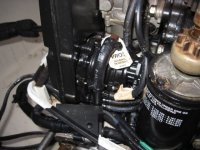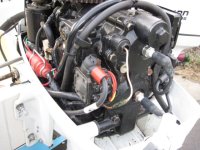Pat Anderson
New member
Crabby Lou has a 1991 Johnson 40 two stroke with automatic oil injection. I think it was Marc who suggested the automatic oil injection should be disconnected in favor of mixing in the tank (I know David has already done this on his 16, which also has an old Johnson 40) because the motor is toasted if the automatic oil injection should fail for some reason. Is this something I can do myself? How?


